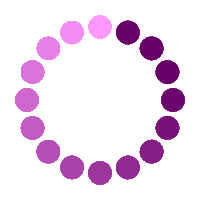- News & Events
- Color
- Brand
- Salon Success
- Services
- Education
- Products
- Goldwell The Red Collection Overview
- Goldwell Seminars
- Goldwell Dualsenses Scalp Specialist Service
- COLOR MORPHING SERVICE
- Goldwell COLOR WASHING SERVICE
- @Pure Pigments Overview
- Goldwell Hair Science
- Goldwell COLOR COOLING SERVICE
- Goldwell Welcome
- Goldwell Service Cycle
- Goldwell Product Knowledge Sheets
- Goldwell The Perfect Beauty Upgrade Services Overview
- Education_Intro
- Goldwell The Red Collection Upgrade Services Overview
- Goldwell The Perfect Beauty Service Collection Overview
- Find out more about our Elumen services here / Elumen Overview
- Goldwell COLOR BOOSTING SERVICE
- Goldwell Iconic Brunette Collection Services Overview
- Goldwell Elumenation Services
- Home
- Education
- Hair Science
- Color Theory
- Dyes and Pigments
DYES AND PIGMENTS
Dyes and pigments are substances that give color to a material. The major difference between dyes and pigments is in the solubility, which is the tendency to dissolve in a liquid. Dyes are usually soluble — or can be made to be soluble — in water and therefore in water containing formulations such as color gels or creams. Pigments are generally not soluble in water, oil, or other common solvents. To be applied to a material, they are first ground into a fine powder and thoroughly mixed with a liquid called the dispersing agent or vehicle.
Dyes are used for coloring textiles, hair, paper, and other substances, while pigments are used for coloring paints, inks, color cosmetics, and plastics.
There are basically two different types of dyes used in hair color technology today:
direct
oxidative
While direct dyes are pre-colored molecules that are generally absorbed on or near the surface of the hair, oxidative dyes are colorless molecules known as couplers and pre-cursors which need the help of an oxidizing agent to react and form the colored molecules. Oxidative dyes penetrate deeply into the hair.
BY THE WAY
Many coloring products contain a combination of both oxidative and direct dyes.
Oxidative Dyes
For an oxidative color we need couplers, precursors and a peroxide lotion.
The chemistry of oxidative coupling is relatively complex but is generally accomplished in three steps:
1
Oxidation of the precursor
2
Coupling between oxidized precursor and coupler
3
Oxidation of the coupling product to give final colored dye
Read more about oxidative dyes here.
Learn more about Color Theory here.
- Home
- Education
- Hair Science
- Color Theory
- Dyes and Pigments


